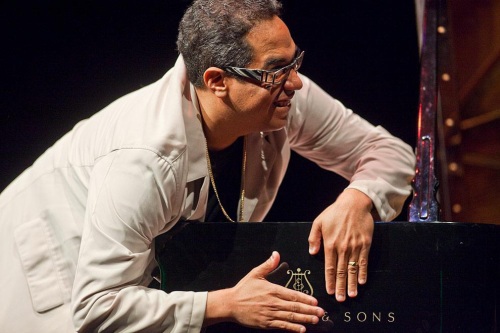In Panama, the cultural trend has been for those with increasing wealth to move to newer, more modern neighbourhoods in the city, leaving behind the poor. The result in the Casco Viejo is a badly run-down neighbourhood. Now things are changing and the actions of a few entrepreneurs and international organisations are overriding the neglectful attitude of local government. San Felipe, (also referred to as Casco Antiguo) is a UNESCO World Heritage Site. Despite its common reference as a ‘colonial city’, the cityscape of French and neoclassical architecture is what UNESCO claims “lends it a special quality that other colonial cities in Latin America lack”. The Casco is a great reflection of the colourful people who inhabit it and offers an insight into the cultural makeup which is so important to their heritage.
At the far end of Plaza Herrera, the same square in which lots of renovation is currently being undertaken, is a distinctive triangular-shaped wooden building. It is a social housing project called La Boyá, named for its resemblance to the independence-era battleship of that name. In the corner of the square, opposite La Boyá and between Avenida A and Calle 10 Oeste, stands the four-storey renovated National Conservatory of Music, which currently serves as housing for local artists and the Danilo Perez Foundation, which helps provide scholarships to many underprivileged children from the area. This foundation is part of a large push to encourage adoption of the arts throughout the city, so that it will one day be associated with first music and then its old architecture, much as New Orleans is today. Another part of the push is the annual Jazz festival that occurs in January (for a good rundown on the festival see http://www.panamajazzfestival.com/english. Through the foundation and the festival, Panama is slowly beginning to make the allure of jazz an integral part of the city scene and is now attracting world-class talent as well as institutionalising community-orientated music projects.
 In a community centre around the corner from Plaza Francia is a wonderful course run for underprivileged girls. CAPTA (Capacitación Para el Trabajo) is an intense six week course run by Fundacion Calicanto, founded to provide job training for women from the local neighbourhoods. One of the unique successes of the course is that, before the girls even get started on the skills of housekeeping, food handling and customer service, they spend four weeks working on personal skills to help them as individuals as well as members of a team. They are taught emotional intelligence, how to communicate effectively, how to approach confrontation, personal image and first aid amongst other subjects. Everything undertaken during the programme is designed to build self-esteem and help the women to see that they have the ability to take control of their lives and remove themselves from poverty, allowing them to improve not only their situation but that of their families as well. Since the program began in 2007, over 100 women have graduated and 90% have found permanent employment.
In a community centre around the corner from Plaza Francia is a wonderful course run for underprivileged girls. CAPTA (Capacitación Para el Trabajo) is an intense six week course run by Fundacion Calicanto, founded to provide job training for women from the local neighbourhoods. One of the unique successes of the course is that, before the girls even get started on the skills of housekeeping, food handling and customer service, they spend four weeks working on personal skills to help them as individuals as well as members of a team. They are taught emotional intelligence, how to communicate effectively, how to approach confrontation, personal image and first aid amongst other subjects. Everything undertaken during the programme is designed to build self-esteem and help the women to see that they have the ability to take control of their lives and remove themselves from poverty, allowing them to improve not only their situation but that of their families as well. Since the program began in 2007, over 100 women have graduated and 90% have found permanent employment.
Many of these projects have been organised by individual entrepreneurs and international organisations, banding together to create a better future for the area. In the absence of assistance from the government, they see the importance of helping others in order to improve their own businesses in the area. Speaking to a local in the Coca-Cola Cafe, it is clear that it isn’t just richer businessmen banding together that create a stronger social scene, but smaller shop-owners who work together to strengthen their businesses, ensuring recommendations get passed between the group so that trade is kept within the area. It is this sense of working together that will in the end create a wonderfully vibrant and commercially strong area of the city that was once neglected and failing.
Alice Bevan







Thank you for describing some of the community work going on in at least part of Panama City. I thought I would see more here given the legacy of so many Americans living here in the past.
In our travels through Central America this spring, we’ve seen wonderful examples of neighbourhood centres and community social services in Nicaragua, El Salvador and Guatemala but not yet here in Panama — but we haven’t had connections here.
By: Maureen Fair on April 11, 2011
at 4:43 pm
I am not sure what is going on in the rest of Panama, but there is an interesting approach to urban revitalization going on in Casco. I volunteered for over a year at the Fundacion Danilo Perez mentioned in this article and now work at a for profit company that does a lot of social work on its own. It is pretty heartening.
By: Paul on April 27, 2011
at 11:38 pm